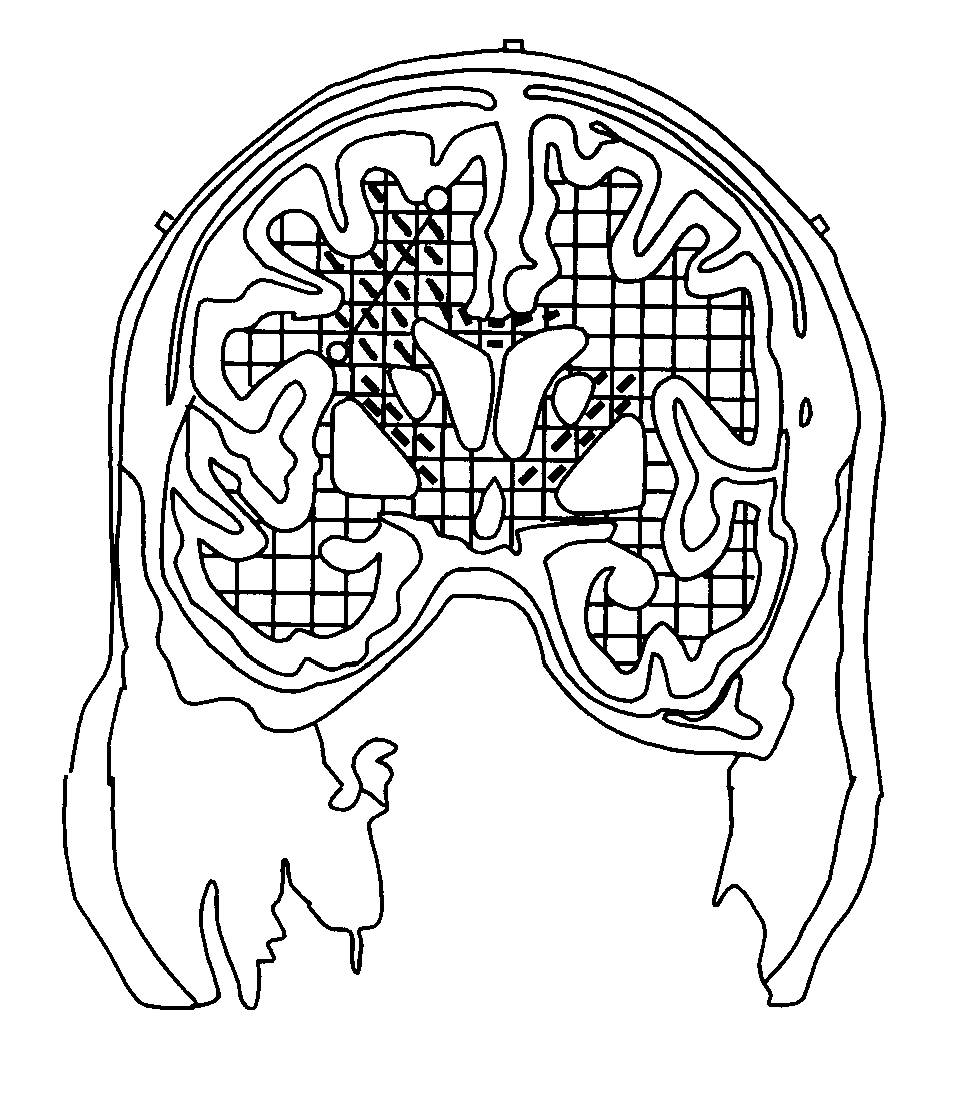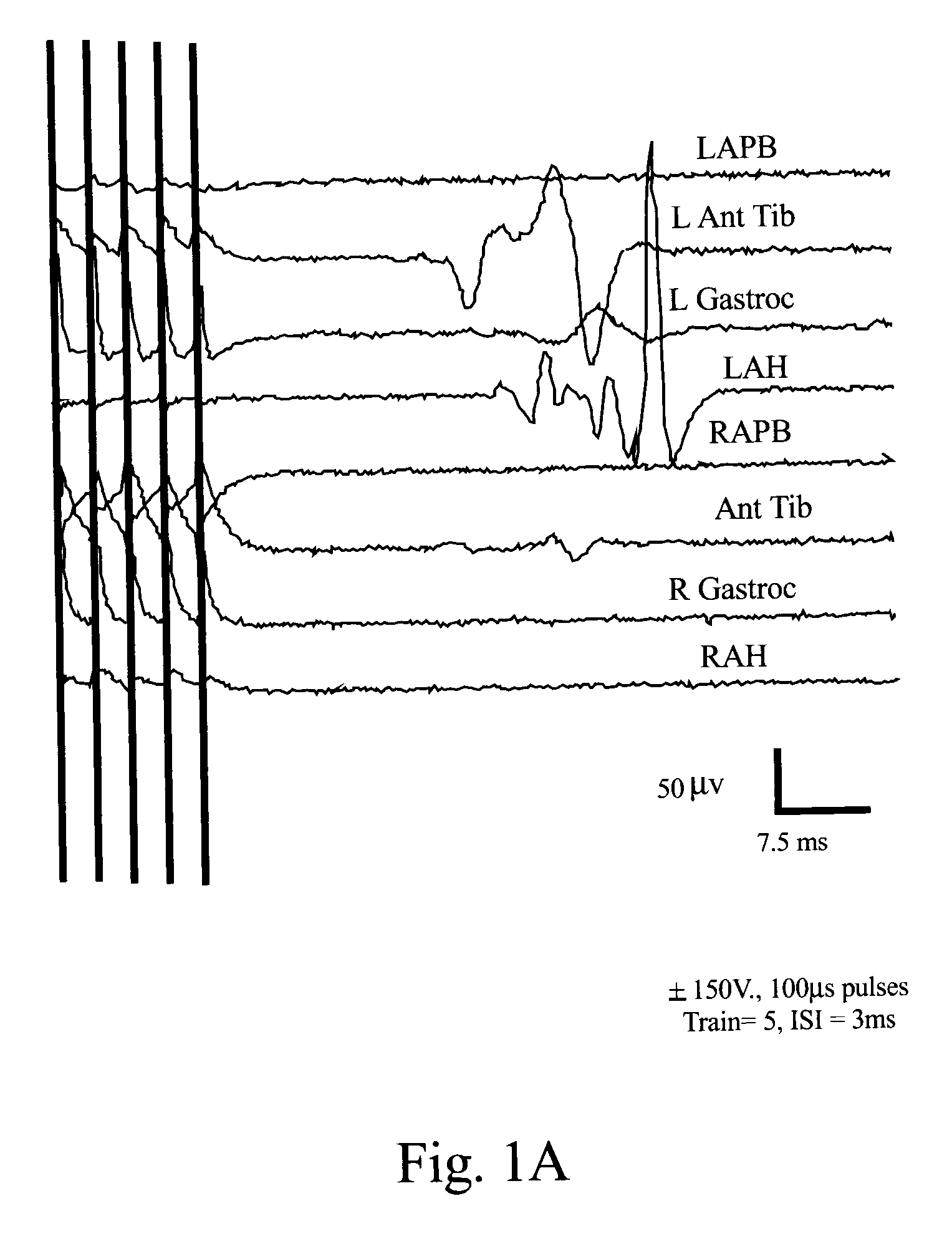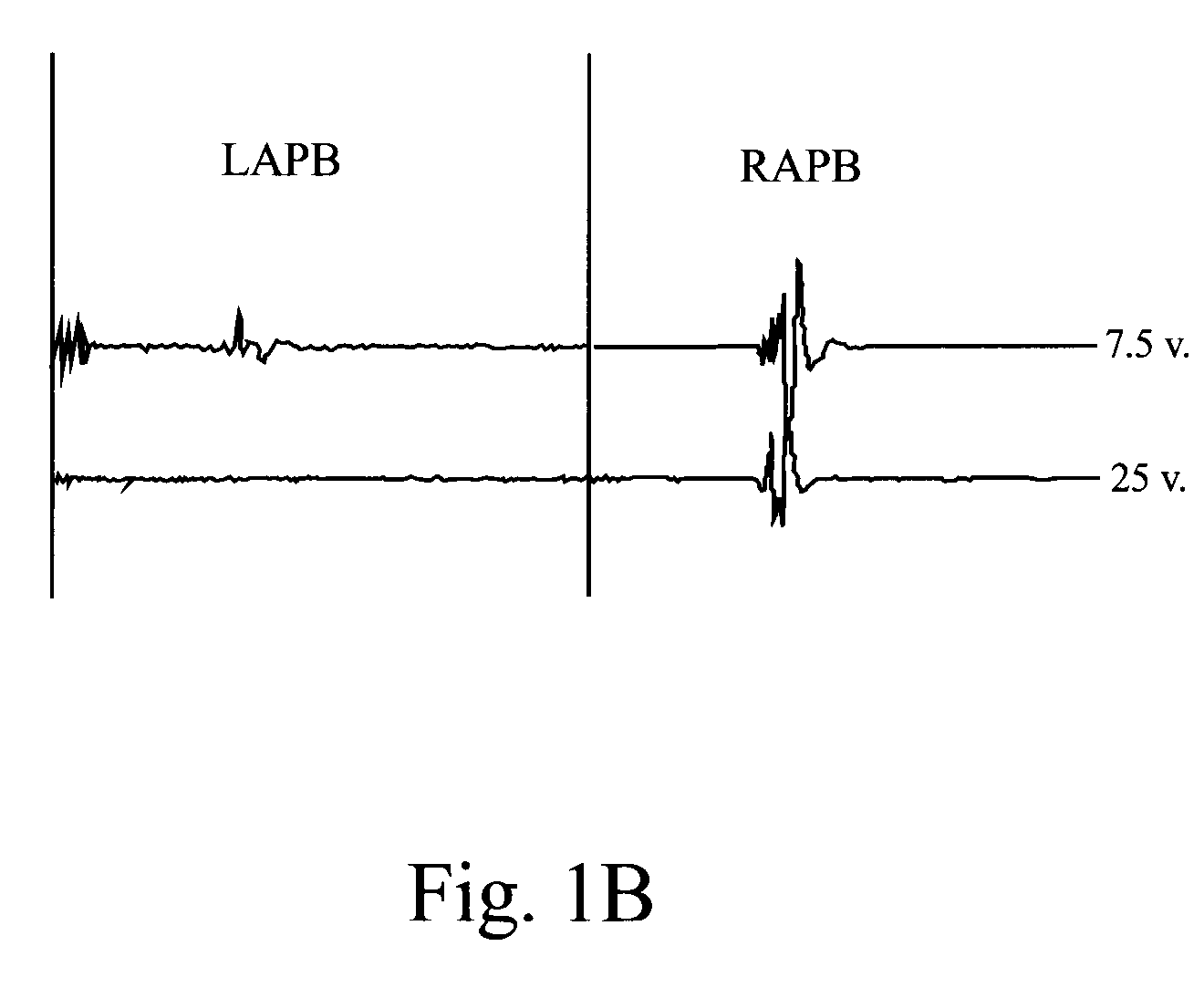Guided Electrical Transcranial Stimulation (GETS) Technique
a technology of electrical transcranial stimulation and get, which is applied in the field of getting, can solve the problems of putting patients at risk of unwanted and unknown side effects, reducing stimulus levels still exceeding normal physiological levels, and causing movement risk factors, so as to achieve effective reduction of involved currents, reduce electrical currents advantageously, and reduce the risk of subjects' health
- Summary
- Abstract
- Description
- Claims
- Application Information
AI Technical Summary
Benefits of technology
Problems solved by technology
Method used
Image
Examples
Embodiment Construction
Abreviations
[0046] CT=Computer Tomography x-ray [0047] GETs=Guided Electrical Transcranial stimulation [0048] EEG=Electroencephalogram [0049] MRI=Magnetic Resonance Imaging [0050] FE=Finite Element method of matrix algebra [0051] SEP=Somatosensory Evoked Potentials [0052] fMRI=functional Magnetic Resonance Imaging [0053] tcMEP=transcranial Motor Evoked Potentials
Introduction
[0054] As will be described in more detail below, solutions to the forward problem are achievable with matrix algebra by constructing a model of sufficient detail representing all the heterogeneities found within an individual's head and brain. The approach described below in the Detailed Description section has bypassed the use of a physical model and uses an individual's MRI and / or CT scan as a representation of the head and brain. MRIs and CT scans are digitized images that can be manipulated through computer programs to which standard algebraic manipulations can be applied. This digital modeling also allow...
PUM
 Login to View More
Login to View More Abstract
Description
Claims
Application Information
 Login to View More
Login to View More - Generate Ideas
- Intellectual Property
- Life Sciences
- Materials
- Tech Scout
- Unparalleled Data Quality
- Higher Quality Content
- 60% Fewer Hallucinations
Browse by: Latest US Patents, China's latest patents, Technical Efficacy Thesaurus, Application Domain, Technology Topic, Popular Technical Reports.
© 2025 PatSnap. All rights reserved.Legal|Privacy policy|Modern Slavery Act Transparency Statement|Sitemap|About US| Contact US: help@patsnap.com



